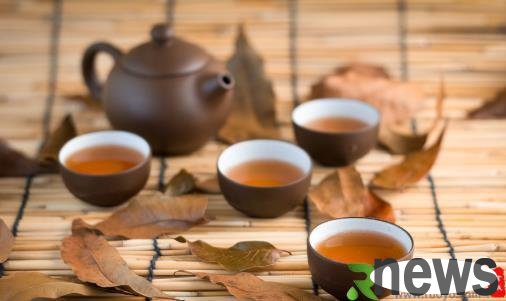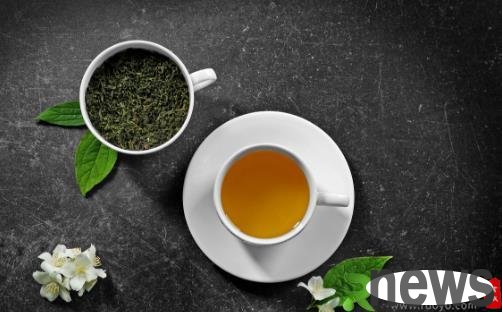Chinese people like to drink tea, but tea stains will appear in the cup after making tea for a long time. Some people say that tea stains are not removed for a long time and are harmful to the body. Is this true? How can we remove the tea stain from the cup? Let’s take a look with the editor.

Everyone who likes to drink tea knows that after drinking tea for a long time, tea stains will appear in the cup. So will tea stain not be removed harmful to health? How can I remove the tea stain from the cup? Many people are concerned about this issue. Here is a detailed answer for you.
Will tea stains cause harm to the body?
Tea stain is produced by the oxidation of tea polyphenols, so people who drink tea do not need to worry.
Food Safety PhD Zhong Kai published in Beijing Youth Daily "Tea Stain has heavy metals, which will lead to premature aging? 》 article points out that the main component of tea stain is tea polyphenols, and a small amount of metal ions participate in the formation of tea stain. Elemental analysis shows that most of the ingredients of tea scale are carbon and oxygen, which come from polyphenol polymers, and there are also a small amount of potassium, calcium, magnesium, aluminum, zinc, selenium and other elements.
Metal elements mainly exist in the form of water-insoluble carbonates or hydroxides, where calcium is the main promoter of tea scale formation, mainly from the water used to make tea. Heavy metal pollutants such as lead, arsenic, cadmium, and mercury are not the main metal elements of tea stains, so people who drink tea do not need to worry.
Tea scale is a polymer produced by tea polyphenols under the action of air oxidation, so it is mainly formed near the waterline and attached to the inner wall of the container. The ingredients of tea stains formed by different types of tea are basically similar. Because green tea has more polyphenols, it is easier to form tea stains, while black and black teas that have undergone deep fermentation have less tea stains.
Studies show that as time goes by, the molecular weight of polymers in tea scale gradually increases, which means that the polymerization of polyphenols is still proceeding slowly. Therefore, it makes sense that the longer the tea stain is, the less likely it is to remove it.

How to easily remove tea stains?
Put a slice of lemon when making tea
Some foreign researchers found that brewing one bag of British black tea at a time produces more tea stains than brewing two bags at a time, and brewing five bags at a time does not produce tea stains. This is likely because the polyphenols in the tea leaves reduce the pH value of the tea soup. There is also a patented result, which is to add a small amount of citric acid to the tea bag to adjust the taste while reducing tea stains.
In addition, calcium ions are the key factor in the formation of tea scale, which promotes the oxidation reaction of tea polyphenols and also plays a cross-linking role in the polymerization process. The harder the water, the more tea stains, the harder the groundwater is than the surface water, and the tea stains formed by brewing tea with pure water will be much less. Make tea in tap water to boil the water thoroughly for a few minutes. The calcium and magnesium in it will form carbonate water alkali, reducing the formation of tea scale.
Potato/Eggshell Descaling Method
First pour about half a cup of hot water into the thermos cup, cut the potatoes into diced ones, put them in the thermos cup, then tighten the lid and shake them up and down for two minutes.
Open the water cup, pour out the water and diced potatoes, and rinse it with clean water. You will find that the tea stain attached to the wall of the cup has obviously decreased. If you repeat this a few times, the tea stain can be removed. If you don’t have potatoes on hand, you can also use crushed egg shells to replace them, and the operation steps are the same.
Salt/toothpaste descaling method
You can prepare a clean toothbrush, soak the toothbrush bristles, dip them in some salt, then put the toothbrush into the cup, carefully brush the wall of the cup, and remove the dirt very well. If you don’t have salt on hand, you can also use toothpaste instead. The bottom of the cup is the most difficult part to clean when descaling. You can find a small piece of soft cloth dipped in some salt or toothpaste, wrap it on the chopsticks, then extend the chopsticks to the bottom of the thermos cup and stir it back and forth a few times.

Method for removing tea stains on citrus peels on cups
After eating oranges, everyone will discard the orange peels. However, here, what the editor wants to tell you is that wiping the tea cup with orange peels can remove tea stains.
For teapots, etc., we can boil them with orange peel or citric acid and add water to boil them. The teapot residues can be cleaned 2-3 times.
(1) Remove the tea stain on metal tea partitions: When using metal tea partitions, they will become black due to tea stains. If they cannot be washed off with medium-sized detergents, they can be soaked with vinegar or bleach to easily remove dirt.
(2) Remove the tea stain on the tea cup or teapot: After using the tea cup or teapot for a long time, there will be a lot of tea stain. Use a sponge to dip in salt to remove it easily.
(3) Remove small pieces of tea stain, soak them in a solution of bleach or cleaning powder, and leave them overnight to remove the tea stain.
(4) You can use toothpaste or crushed egg shells to rinse them with clean water.
(5) Put a small spoonful of orange powder or orange juice in the tea cup or teapot, fill it with water and leave it for 2-3 hours. In this way, the tea stain and the tea set lose their adhesion and it will be easily removed.

(6) You can peel the potatoes, put all the peeled potato skins into the teapot and the tea cup to heat and boil together. After the water boils, cool it a little before scrubbing, you can easily clean the tea stain attached to the teapot and the tea cup to remove the tea stains. The principle is that there is starch in potatoes, which have strong breathing and breathing force, so it is easy to remove the dirt in the cup.
(7) Although some tips for cleaning tea stains can help remove tea stains, there are already professional tea stain cleaners in China. This type of tea stain cleaner is extracted from natural materials, and does not contain chlorine and does not contain fluorescent whitening agents. It is good and environmentally friendly. It is suitable for cleaning of all kinds of tea sets.
The tea stain has been deposited for a long time and is difficult to clean. You can soak it in heated rice vinegar or baking soda for a day and night, and then brush it with a toothbrush to clean it easily. It should be noted that if you are using a purple clay teapot, you do not need to clean it like this.. The purple clay teapot itself has pores, and the minerals in the tea stain can be absorbed by these pores, which can protect the pot and will not cause harmful substances to "run" into the tea and be absorbed by the human body.
